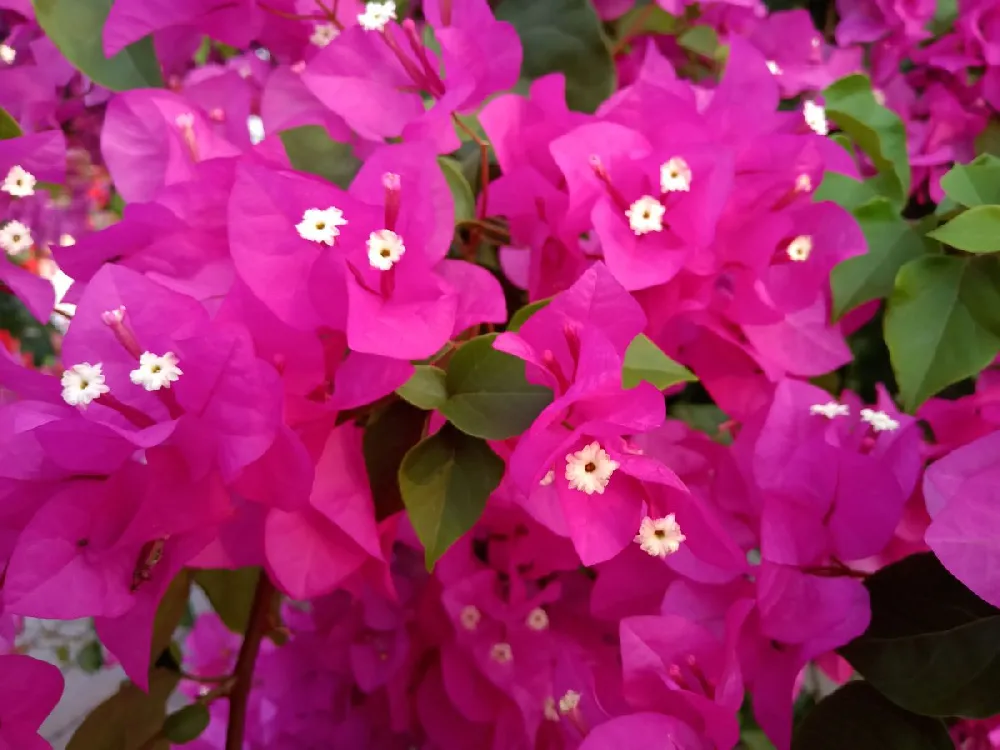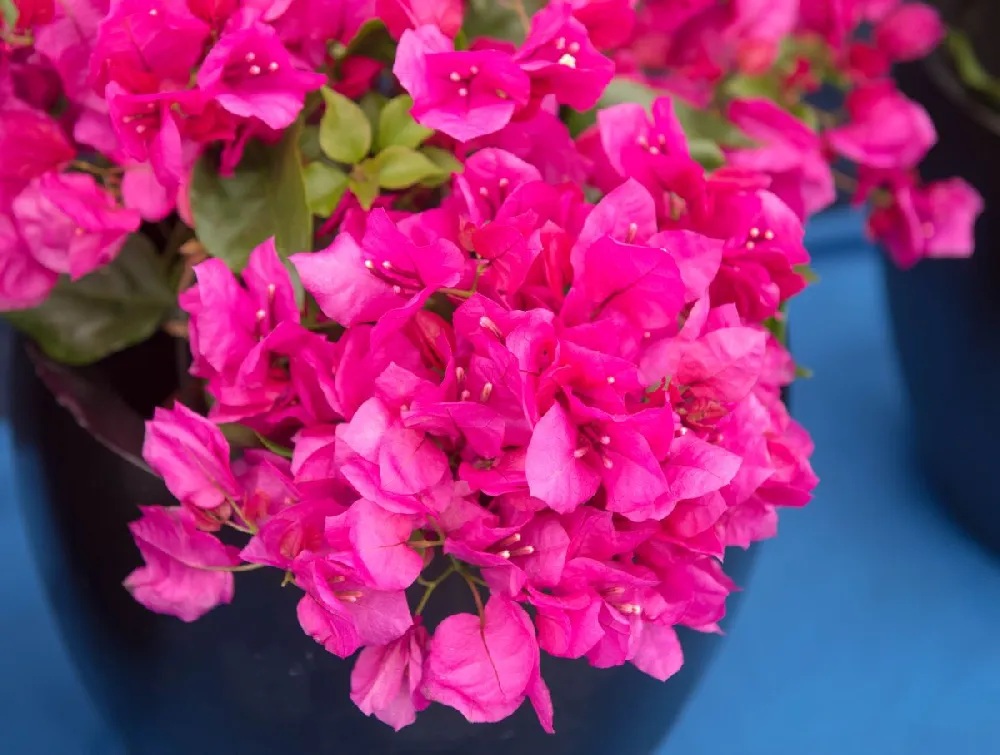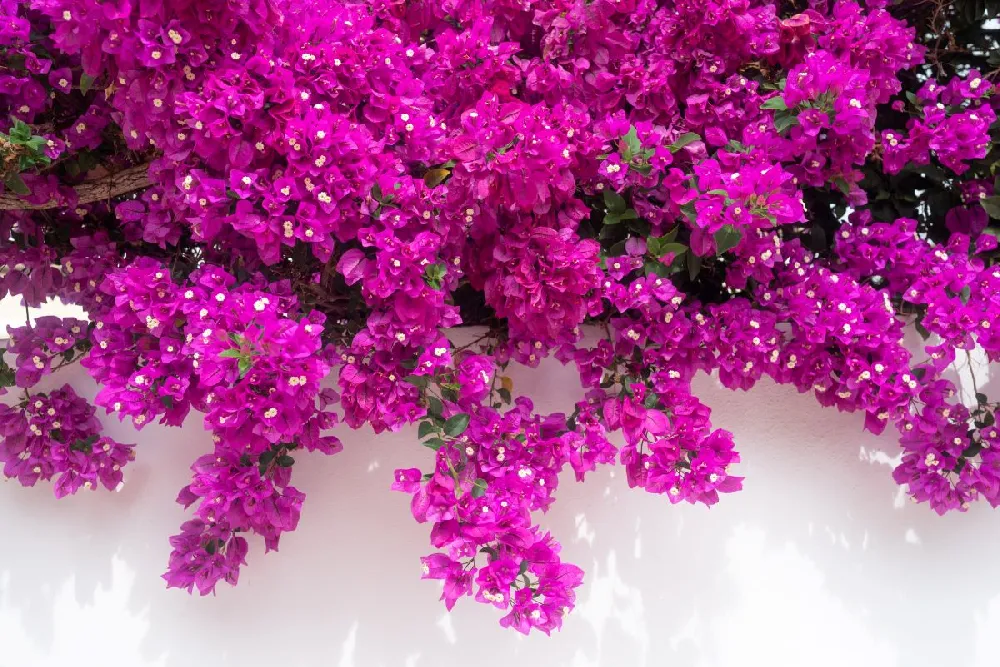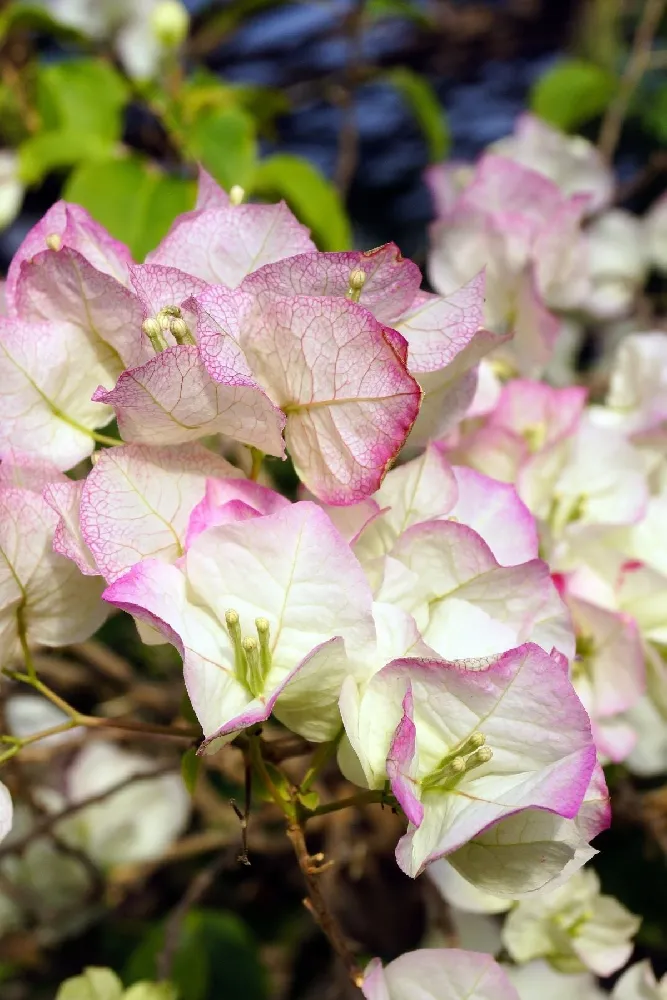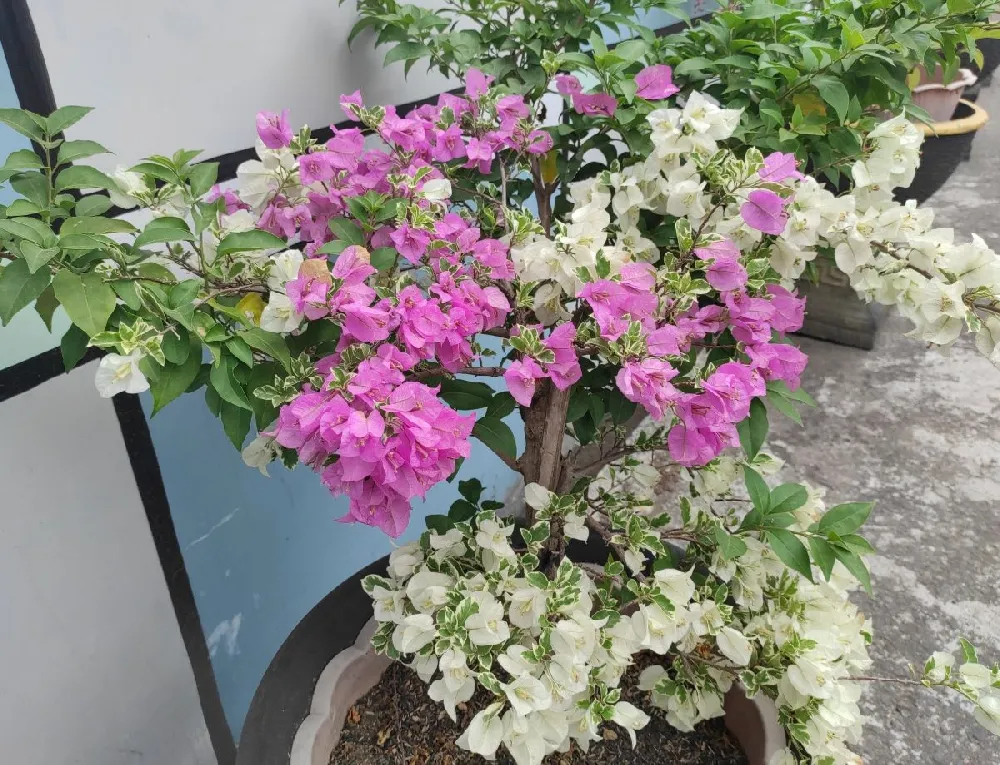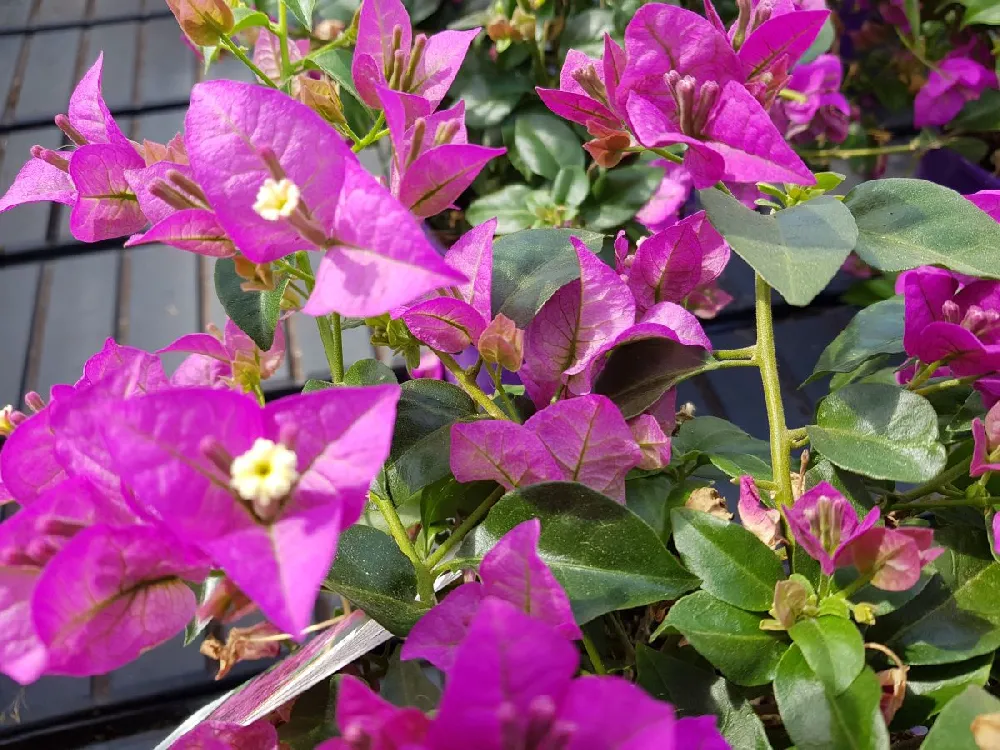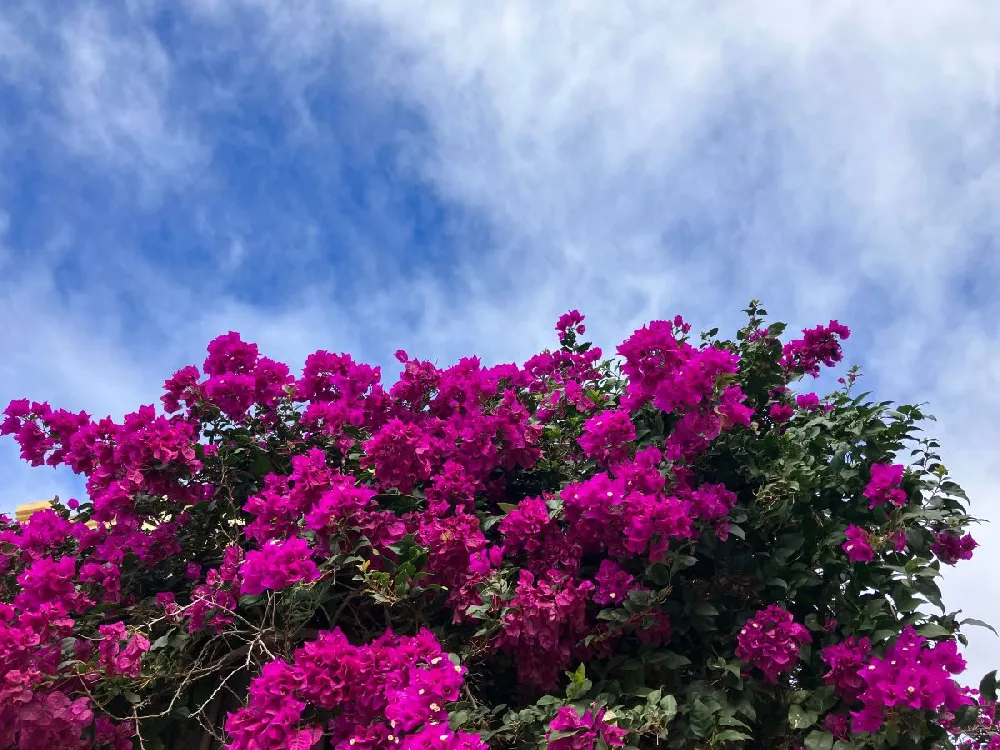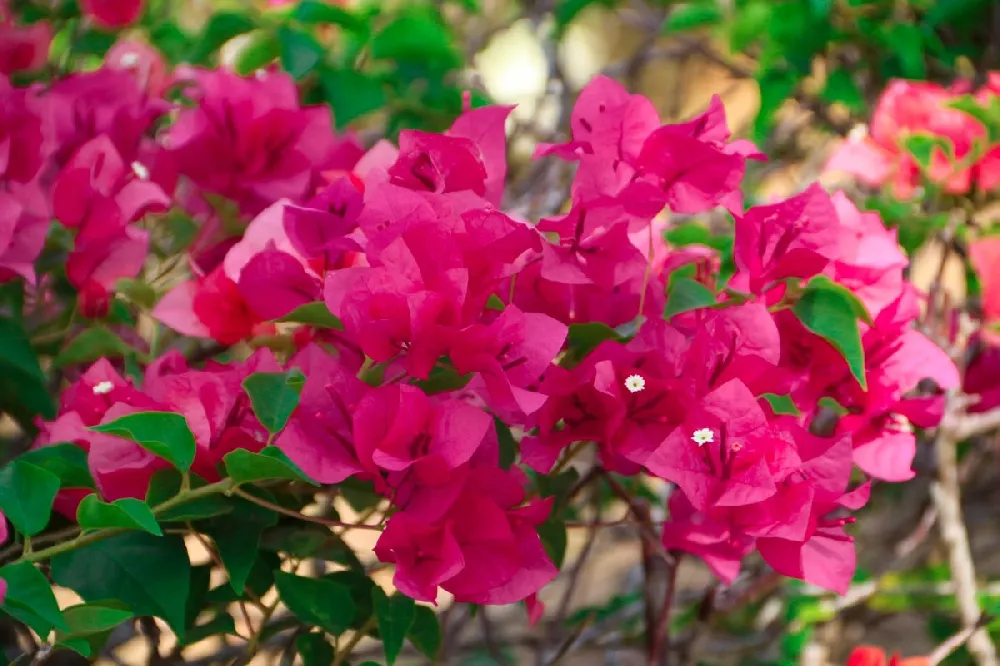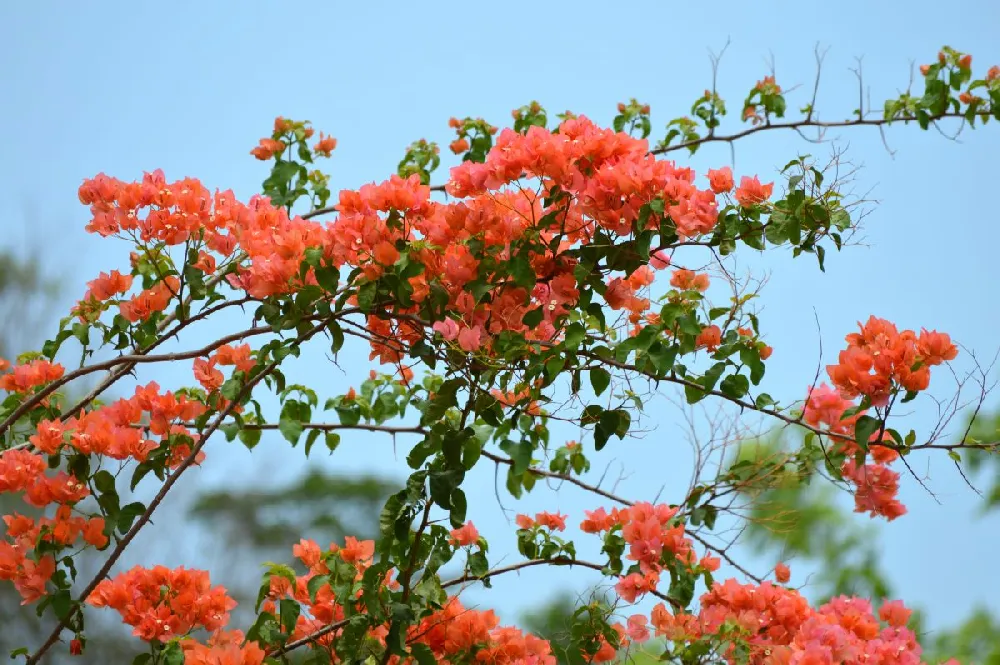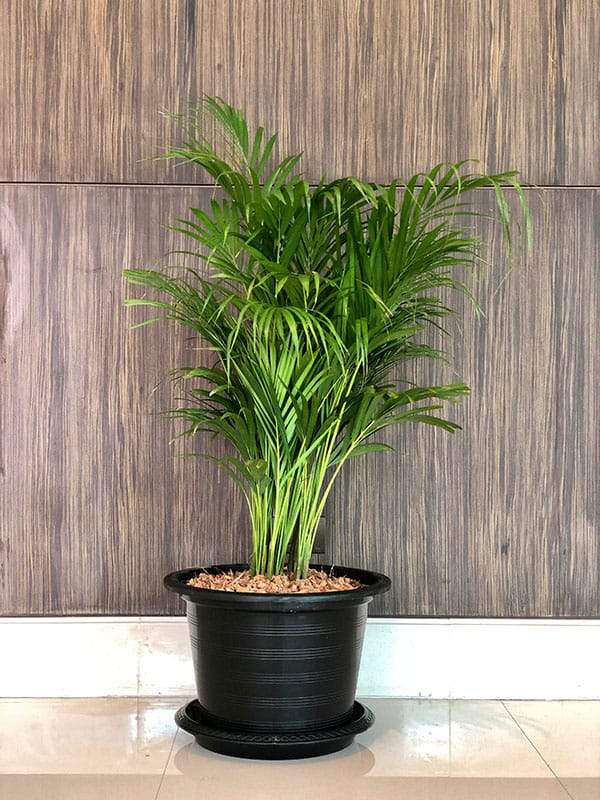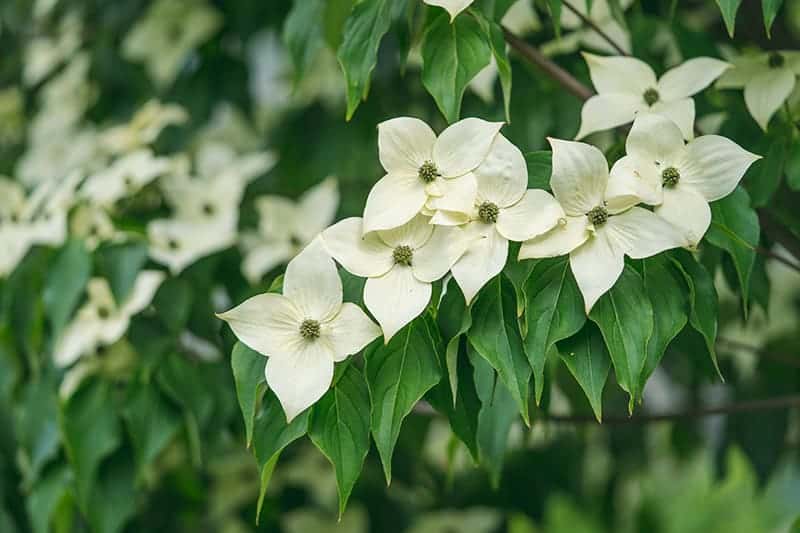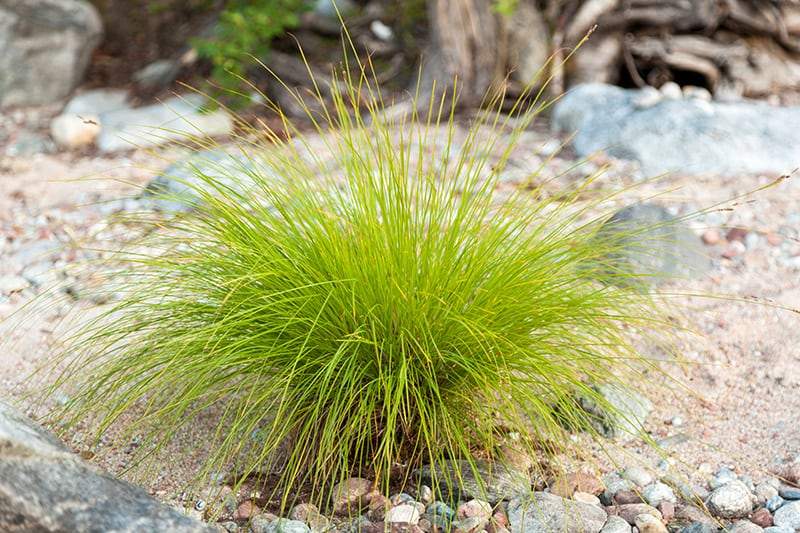- Home >
- Bougainvillea
Bougainvillea for Sale - Buying & Growing Guide
9 Results
-
Growing Zone(s): 3-11 / 9-11$114.95
$139.95Save up to 17% -
Growing Zone(s): 4-11 patio / 9-11$97.95
$149.95Save up to 34% -
Growing Zone(s): 3-11 / 9-11$69.95
$82.95Save up to 15% -
Growing Zone(s): 3-11 / 9-11$129.95
$159.95Save up to 18% -
Sold OutGrowing Zone(s): 4-11 / 9-11$159.95
-
Sold OutGrowing Zone(s): 4-11 patio / 10-11$94.95
-
Sold OutGrowing Zone(s): 3-11 / 10-11$114.95
-
Sold OutGrowing Zone(s): 3-11 / 9-11$109.95
-
Sold OutGrowing Zone(s): 3-11 / 9-11$34.95
How to Grow Bougainvillea
How to plant bougainvillea
It’s important to site your bougainvillea in an area that gets at least six hours of sun. These vines love heat and sun, so the more you can supply, the happier they will be. Bougainvilleas are also susceptible to root rot, so choose a location with excellent drainage. Soil p should be between 5.5 and 6.0. The best time to plant is spring or summer, so they can acclimate in warm weather.
To plant your vine, dig a hole that’s about twice as wide as the root ball and as deep. Break up the soil in the bottom of the hole, adding a generous helping of organic matter like shredded leaves or compost. Unpot the plant and gently tease out or prune any roots that are circling the root ball.
Plant your bougainvillea so that the juncture where the roots meet the trunk is at grade. Backfill with compost-amended soil, and water generously. Although Bougainvilleas can handle drought once established, newly-planted vines need considerable watering every few days.
How to achieve maximum results
Bougainvillea is best suited to climates in USDA Hardiness Zones 9 through 11. They are native to South America and do best in near-tropical conditions. Siting them against a stone or brick wall can help them thrive, as the heat released by the wall warms them even further.
If your temperatures go much below 60 degrees fahrenheit at night, your bougainvillea would be better planted in a pot that can be brought indoors when cool weather threatens. If you choose a potted bougainvillea, make sure the variety you purchase is on the smaller side, since bougainvilleas are vines, and some can climb to 25-30 feet
How to Care for Bougainvillea
Watering and nutrients
Soil for a newly-planted bougainvillea should be kept moist for the first few months. Water your mature bougainvillea, however, only when the soil feels dry – it does not like wet roots. If your bougainvillea is in a planter or pot, be sure there are drainage holes in the bottom so that water doesn’t pool, since bougainvillea roots are fragile and standing water can cause rot.
When you plant your bougainvillea, add some high-phosphate fertilizer to the soil to give the roots a boost. Once the plant is established, feed every few months with a balanced slow-release fertilizer, such as 10:10:10. If the plant is growing too fast, cut back on fertilizing, and avoid fertilizing during the winter months.
Pollination
Bougainvilleas are not self-fertile, though each vine has male and female flowers. The bright, colorful “flowers” for which we grow the vine are actually bracts, not flowers. The true flower is a small white structure inside the bracts. Butterflies, bees, and hummingbirds all help with pollination, leading to tiny seeds that follow flowering.
Pruning
After your bougainvillea has finished blooming in late winter, cut it back, making your cuts at joints or bud nodes. Remove old woody growth or crossed branches as well as any that are broken. Trim your plant regularly to keep it well-shaped and to a size you’re comfortable with. If your bougainvillea is a type that tops out at 25 feet, though, don’t prune it to stay at 3 feet – that drastic a pruning may damage your vine.
Pests, diseases, and animals
There are several pests and diseases to watch out for with your bougainvillea. Leaf cutter bees take big bites out of the leaves. They are also effective pollinators, though, so your best course of action is to leave them alone. Leaftier caterpillars and bougainvillea loopers, however, are small worms that can be removed by hand of sprayed with BT.
Like many plants, Bougainvillea are susceptible to various fungal and bacterial leaf spot diseases. These generally cause reddish-brown spots on the leaves and can be controlled by a spray fungicide in the spring. Leaf drop can occur from both under- and over-watering, and root rot is a symptom of overwatering.
Temperature
Bougainvilleas are tough and drought-resistant plants but at their early stages of growth, they can get damaged by frost or their leaves may fall off. If the plant isn’t subjected to more frosts, it will regrow. The optimum temperature for these flowers are 70-85 degrees fahrenheit during the day, and 60-70 degrees fahrenheit at night. Bougainvilleas are drought-tolerant and grow well in warm climates.
Light
For optimal results, place the plant in full sun. Bougainvilleas need at least 5 hours of full sunlight for good blooming. The more direct sun they get the better. If they get less than 5 hours of light exposure a day, they may not bloom at all. If your bougainvilleas are in partial shade, they will not grow or bloom as well as they would in full sunlight. The plants will more than likely not flower indoors so if possible, keep them outdoors and provide them with maximum sun exposure.
Soil and drainage
Any good quality soil with adequate drainage will suffice. It’s important not to immerse the roots in puddles of water and ensure the drainage holes aren’t clogged. The most active growth season is during summer and early fall so with good quality soil and generous watering, the bougainvillea flowers will thrive.
Humidity
Bougains love high humidity, especially when they’re about to bloom. Always aim for around 50% humidity level for best results. Maintain the humidity level by spraying the plant’s leaves with cool mists of water. In winter, use a humidifier or a humidity tray if keeping the plant indoor.
Repotting
Repotting must be done in spring after the pot size has reached its maximum capacity for the plant. When repotting, cut off an inch or two of the outer root ball. Make sure the root ball is wet before repotting it as the roots won’t hold out very well if dry. The pot you choose must be larger than the previous one. Bougains generally bloom best when they’re in an adequately-sized pot.
Propagation
Every trim of bougainvillea provides you with lots of additional plants. With a little patience and regular cuttings, you will be able to grow further bougainvilleas during the entire propagation phase. Propagation a young plant works just as effectively as the mother plant as long as the shoot tips are non-blossoming with a length of 10-15cm. Simply cut underneath the idle bud and immerse it into rooting powder. Make sure the lower half of the leaves is removed. Important note: propagation should be done before the plant starts blooming.
Other Common Bougainvillea Varieties
Thornless
The thornless varieties of bougainvillea, such as Miss Alice, are known for their white clusters of flowers and moderate growing habit. Miss Alice can grow up to 2 feet in height and is mainly used to cover the ground. The leaves are long and dark green.
Extra Large
Yellow Glory is a fast growing vine that is ideal for the outdoors. Its huge clusters of yellow flowers are perfect for any landscape. And because its branches are thick and long, it’s well suited for climbing the garden wall or a trellis. This bougainvillea variety can grow 30 feet in height and up to 10 feet wide so it needs plenty of room to spread itself out.
Semi-dwarf
The semi-dwarf variety originates from Europe and is characterized by its deep purple color. The leaves are rounded and light green. Just as the name suggests, this variety only reaches up to 4 feet in height and the same in width.
Conclusion
No matter which bougainvillea variation you choose to grow in a pot, hanging basket, or in your garden, by following our tips and instructions on how to grow and care for this plant, you can be sure of enjoying its beautiful flowers every year. If you have any questions or comments, feel free to post them below, and don’t forget to share this article with other plant growing enthusiasts!
FAQs
Why won’t my bougainvillea bloom?
It may be because the plant is not getting adequate sunlight. Bougainvilleas usually bloom after the dry season. If yours still hasn’t bloomed after winter, allow the plant to go completely dry before watering it. Do this for a few weeks before feeding it with fertilizer. Water the plant daily but not too much. It should start blooming again within a month.
Are bougainvilleas evergreen?
Yes. Bougainvillea is classed as evergreen because it keeps its leaves all-year-round in mild climates.
Do bougainvilleas bloom throughout the year?
It depends on where they are located and the climate. These plants will typically start blooming from mid spring to late fall, with the heaviest bloom-time being in April and November. In the subtropics, on the other hand, Bougainvilleas flower all-year-round.
How quickly do bougainvilleas grow?
These plants are among the fastest growing tropical plants that can grow up to 36 inches every year.
When is the best time to transplant my bougainvillea?
While you can transplant a bougainvillea in winter as long as it is protected from frost, the most recommended time is in spring.
Are bougainvilleas poisonous to dogs and humans?
If your dog eats bougainvillea, seek veterinary advice as the plant can be mildly toxic to animals. That said, most pets won’t have a problem around this plant as long as the thorns don’t prick them. The sap of Bougainvillea can cause diarrhea in humans if ingested in large amounts. If the plant’s sharp thorns come into contact with the skin, they can cause an allergic reaction or a skin rash.
Why is my bougainvillea turning yellow?
Too little water or too much can cause a bougainvillea to turn yellow. Frost can also be the cause so it’s best to move your potted bougainvillea indoors during winter. When watering, water the plant thoroughly and wait until its soil is dry before watering it again. Yellowing can also be a sign of excessive watering, too little sunlight, or insect damage. Another common cause could be nutrient deficiencies that turn the leaves yellow.
